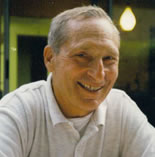Alan S. Manne

Alan S. Manne (1925-2005) received his A.B. in 1943 and his Ph.D. in Economics in 1950 from Harvard University. He subsequently taught at Harvard and Yale, and worked at the RAND Corporation. Thereafter, he spent most of his time at Stanford University. Although he retired from teaching in 1992, he was very active as a professor emeritus and continued to publish through 2004.
After working at IIASA from 1973 to 1974, Alan returned to the Institute frequently to work with IIASA's energy programs. In collaboration with Professor Wolf Häfele, he developed the seminal Häfele-Manne model, the "ancestor" of the widely known MERGE and the MESSAGE models.
Alan S. Manne also introduced the idea of establishing the International Energy Workshop (IEW). Together with IIASA, he organized the first IEW meeting at Stanford in 1981, thereafter serving as its senior co-director.
Known as an advocate for combining environmental and economic objectives in energy-economic modeling, Alan’s work was highly policy relevant. He was the coauthor of seven books and over 120 papers. Beyond this, Alan was an excellent and enthusiastic teacher. His house was open to many of his students, and he always had an open ear for anyone seeking his advice.
As many know, Alan was also a devoted horseman and enthusiastic polo player, a sport he took up at the age of 62. Although he received many prestigious professional awards, he was proudest of his “Most Improved Player” award from the Menlo Park Polo Club in 1992.
